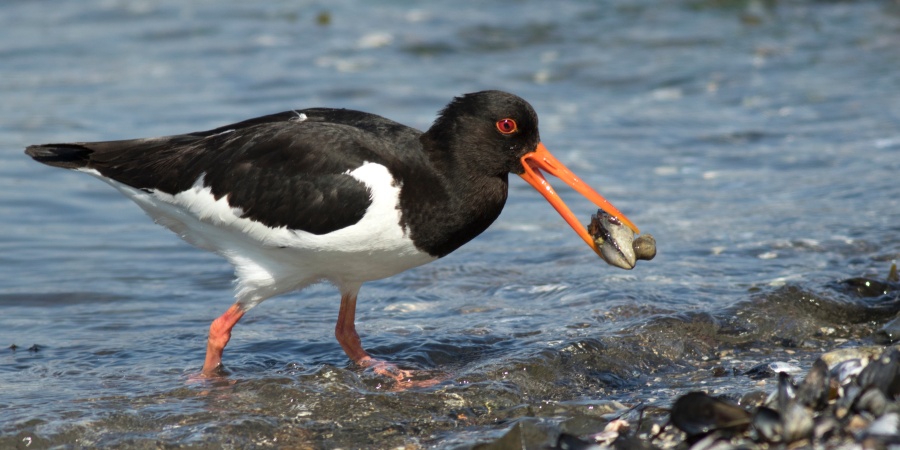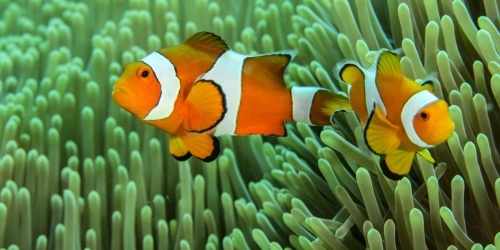
Oystercatcher - Photo John Sandoy / Adobe
What is an oystercatcher? Pied oystercatchers (Haematopus longirostris) and sooty oystercatchers (Haematopus fuliginosus) are easily recognised by their brilliant red legs, eyes and long red, scissor-like bills, used to prise molluscs from their shells.
What does it look like? The sooty oystercatcher is black all over, while the pied oystercatcher has a black head, neck, upper breast, wings and tail with white underparts. Both birds are about 50 centimetres long.
Where does it live? Oystercatchers live along rocky shores, beaches, estuaries and offshore islands. Both species are common around all parts of the Australian coast and are seen in all Western Australian marine parks. The pied oystercatcher also occurs in New Guinea.
What does it eat and how? Oystercatchers are either ‘stabbers' or ‘hammerers’, depending on which method of feeding they learn from their parents. After first digging out their shellfish prey from wet sandflats, stabbers extract the animal with a quick jab, while hammerers beat the shell until it breaks.
Behaviour: The adults will go to great lengths to defend both the eggs and young, even to the extent of feigning injury in a performance known as a broken wing display. The call is a loud kleep or hu-eep sound.
Breeding and caring for young: These birds lay two to four eggs in a shallow sandy depression or on rocky shores or cliffs. Both sexes will incubate the eggs and care for the young. Sooty oystercatchers share these duties fairly equally, but female pied oystercatchers do the majority of the incubation. The young leave the nest within a couple of days of hatching but remain with their parents for several more weeks.
Protecting oystercatchers: Try not to disturb their feeding activities and enjoy watching these entertaining birds from a reasonable distance. If an oystercatcher is thought to be on a nest, do not approach the nest as this may cause the bird to abandon it, leaving the egg exposed to predators, the weather or accidental trampling by beach users, as the egg is very well camouflaged. Only walk dogs on beaches where it is permitted, and if dog walking is allowed and birds are on the beach, keep your dog on a leash. Read and obey any signs on the beach that may indicate that birds are nesting.



























